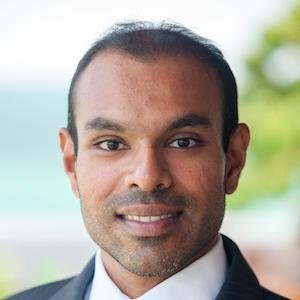
Articles
Editor’s Picks
Industry News
How to Turn a MOOC Into an Engaging Marketing Vehicle
By Henry Kronk
July 07, 2018
Many learners and education professionals tend to look on MOOCs with the same lens. Headlines declare that ‘MOOCs Are Dead,’ with the implication that an entire species is on the verge of extinction. The MOOC-sphere in reality is a diverse ecosystem. In their landmark study, MOOCs: Expectations and Reality, Professors Fiona Hollands and Devayani Tirthali describe how, “colleges and universities have adopted several different stances towards engaging with MOOCs and are using them as vehicles to pursue multiple goals.” With that in mind, eLearning Inside got in touch with Dr. Satesh Bidaisee, a professor of public health at St. George’s University (SGU) to discuss how they have implemented their MOOC and why they push for such high completion rates.
The One Health/One Medicine MOOC was created by Dr. Bidaisee and SGU in 2013 and initially hosted on Canvas, Instructure’s academic LMS. And from the get go, it was intended to do numerous things.
SGU’s First MOOC
“Back in 2013, SGU began a concentrated plan to develop online education,” Bidaisee said. “One of the ways the university saw to encourage the use of the online platform was to develop open access as a way of marketing the university and the online program, but also a way of testing it out.”
And so the MOOC was born. Initially capped at 1,000 students, Bidaisee found that by the end of the course, over 100 students remained. That was pretty good at the time, but the team at SGU wanted to do better.

“In the post mortem after that first MOOC experience, we recognized a couple of things. One is that we needed a platform for ourselves which we could design, that we can use to deliver our own material based on academic expectations and not necessarily confine ourselves to preexisting domains,” said Bidaisee.
They also knew that if the MOOC was going to be an effective marketing tool, they’d need to boost engagement. And to do that, Bidaisee and his team decided to emphasize engagement and learner interaction. Using the Open edX’s architecture, they created a new course with the freedom to tailor it to their needs.
“With that platform, we were able to have a lot of built-in mechanisms for interaction, whether it’s live seminars, live office hours, or discussion blogs linked to twitter. There were a lot of developments,” Bidaisee said. In addition, they switched from primarily pre-recorded content to live lectures.
Following the next run in 2014, there was no cap, and 1500 learners enrolled. In the end, over 800 of those students completed the course. And those completion rates have remained consistent with each subsequent MOOC.
The Virtues of High Completion Rates
Many institutions cite lofty and admirable reasons for spending the tens+ of thousands of dollars needed to get a MOOC off the ground. They tend to leave out the fact that it’s just as much an exercise in selling their university.
As Hollands and Tirthali write, “For institutions of higher education, building and protecting brand serves to attract and retain students, faculty members, and partnership opportunities with other institutions, funders, and alumni networks. Interviewees from 41% of the institutions in our study sample that were offering or using MOOCs stated that branding, positioning, or attracting students was a strategic goal for the initiative.”
With the new completion rates, Bidaisee knew they had a solid marketing tool on their hands.

“As a marketing effort, we never intended this to be a very large MOOC with tens thousands of students. That was never in our interest. We wanted to offer something for learners who have a particular interest in the course, also with medicine of public health, which is what we offer at SGU. Our marketing focused more on a niche population who already worked or studied in medicine of public health or those who aspired towards it.”
“So in that sense, we did not capture the thousands of students that other MOOCs have. But I still believe that we have been successful. Because when you have a captive audience that is interested in a particular theme or topic being discussed, then you have students more amenable to thinking about beginning or to maintaining the academic course.”
After the initial MOOC boom in 2012-2013, many began to deride the courses because of their dismal completion rates. Recently, educators have begun to rethink those metrics, arguing that it’s no problem if learners don’t finish an entire MOOC. Maybe they’re only interested in a single module, and that’s totally fine. Bidaisee, however, has a different perspective:
“So I’m an academic. And as an academic, I would want my students to complete my courses. If I design a course, I want them to be actively engaged. I see education as being more edutainment than education alone because, to capture audiences, to retain attention, you need to have a lot of different points of engagement.”
To make his course more engaging and, ultimately, better educate his learners, Bidaisee has learned a few things.
“The idea of online isn’t a question of yes or no. I don’t think we have a choice. The rest of the population is already in an online environment. We have to meet them where they are.”
“Do not take one of your interesting courses and just apply it as a MOOC. Creating a MOOC is not creating a course. You have to design the course particularly for the MOOC setting. The key is to understand the medium and to work with instructional designers. They understand what tools are available. I find it’s a very dynamic process. I would encourage anyone interested in creating a MOOC to fully explore the full range of technological options that are available.”
Cover Image: SGU Campus. Josh Yetman.









No Comments